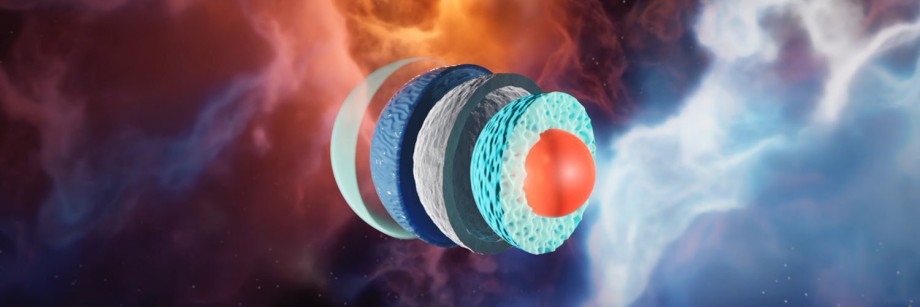Researchers at the University of Stavanger are now one step closer to finding out what is in the core of neutron stars. A new estimate shows that it is 75-90 percent likely that neutron stars hide cores of quark material.

Neutron star cores contain matter at the highest densities reached in the Universe, with an equivalent mass to that of two of our own stars, the sun, compressed inside a sphere of 25 km in diameter. These astrophysical objects can be thought of as gigantic atomic nuclei, where gravity compresses their cores to densities surpassing not only those of typical nuclei but also of the neutrons themselves.
These densities make neutron stars interesting astrophysical objects from the perspective of particle and nuclear physics.
“Somewhat similar conditions are also reached in nuclear collisions at the Large Hadron Collider at CERN. In these collisions, neutrons melt into a kind of plasma of their fundamental building blocks, known as quark matter. It is one of the grand questions in astrophysics whether quark matter can also be found in the cores of neutron stars,” explains Associate Professor Aleksi Kurkela at the University of Stavanger.
Quark matter or something even more exotic
In a recent article published in Nature Communications, a team at the University of Stavanger presented a first-ever quantitative estimate regarding the likelihood of quark-matter cores within massive neutron stars. By combining information from astrophysical observations of neutron stars using radio, X-ray, and gravitational-wave observatories, along with theoretical insights from particle colliders, the team demonstrated that the existence of quark matter cores is nearly inevitable in the most massive neutron stars. The quantitative estimate extracted by the team placed the likelihood in the range of 75-90 percent.
“It appears that cores of quark matter are highly likely to exist. Furthermore, if they don't, it seems that the transition from neutron matter to quark matter must be so violent that even a small drop of quark matter would cause the neutron star to collapse into a black hole,” explains Oleg Komoltsev, a Ph.D. candidate at the UiS and one of the leading authors of the paper.
“While this presents an intriguing scenario, it would require quite unexpected behavior from ultra-dense matter,” he continues.
A missing piece comes for particle colliders
A key element in obtaining the new results was establishing the connection between nuclear collisions at CERN and neutron stars. “The study of quark matter in nuclear collisions has informed us about the indicators of quark matter, even within neutron stars. And quite remarkably, the theoretical calculations employed to model nuclear collisions offered the missing link to identify quark cores in neutron stars,' explains Komoltsev who has pioneered the link between the two systems.
"With these new results, we have clearly established that something exotic is occurring in the cores of neutron stars. What exactly it is, time will tell," concludes Aleksi Kurkela.
"Well, time, along with careful observations and theoretical calculations," he adds.
Read more: In the core of a neutron star
Text: Kjersti Riiber
The researchers
Department of Mathematics and Physics
Department of Mathematics and Physics

